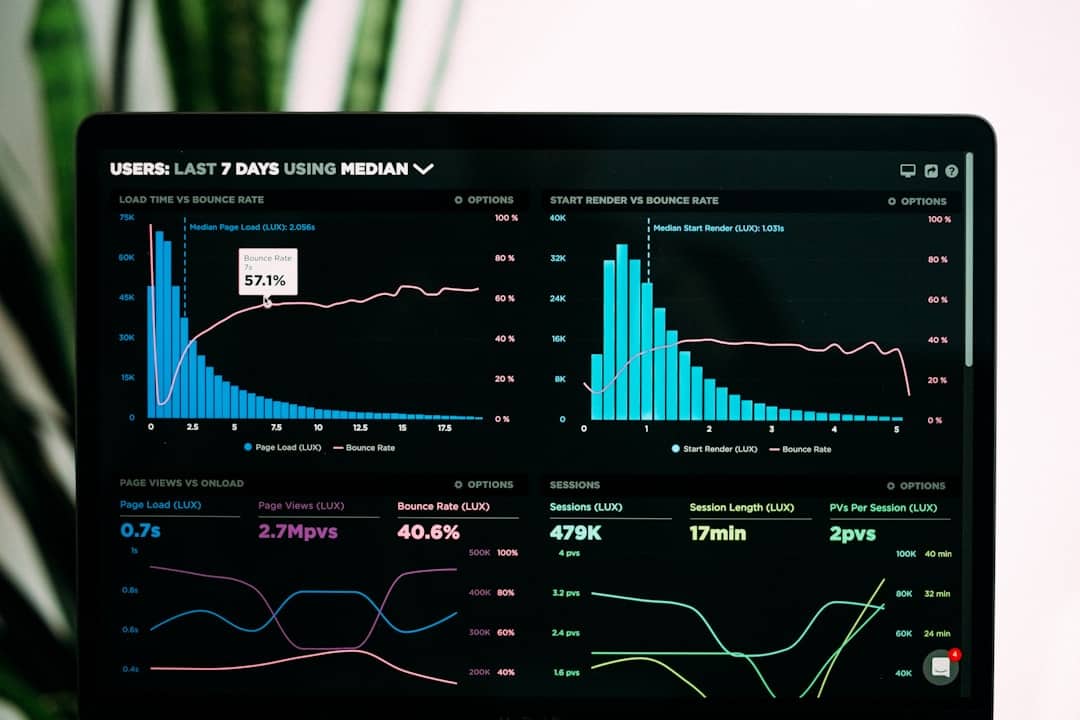Machine learning is a subset of artificial intelligence (AI) that focuses on the development of algorithms that can learn from and make predictions or decisions based on data. It is a rapidly growing field with applications in a wide range of industries, from finance and healthcare to marketing and entertainment. At its core, machine learning involves training a model on a dataset to make predictions or decisions without being explicitly programmed to do so.
There are three main types of machine learning: supervised learning, unsupervised learning, and reinforcement learning. In supervised learning, the model is trained on labeled data, where the input and output are known. The goal is to learn a mapping from input to output so that the model can make predictions on new, unseen data.
Unsupervised learning, on the other hand, involves training the model on unlabeled data and finding patterns or structure within the data. Finally, reinforcement learning is a type of machine learning where an agent learns to make decisions by interacting with an environment and receiving feedback in the form of rewards or penalties. AI, on the other hand, is a broader field that encompasses the development of intelligent systems that can perform tasks that typically require human intelligence.
This includes tasks such as understanding natural language, recognizing objects in images, and making decisions based on complex data. Machine learning is a key component of AI, as it provides the algorithms and techniques that enable systems to learn from data and make intelligent decisions.
Key Takeaways
- Machine learning and AI are powerful technologies that enable computers to learn from data and make predictions or decisions.
- Scikit-Learn is a popular and user-friendly machine learning library in Python, offering a wide range of algorithms for classification, regression, clustering, and more.
- TensorFlow is a leading open-source platform for building and deploying deep learning models, providing tools for creating neural networks and training them with large datasets.
- Scikit-Learn allows for easy building and training of machine learning models using a simple and consistent API, making it accessible for beginners and experts alike.
- TensorFlow enables the implementation of complex deep learning models, including convolutional neural networks and recurrent neural networks, for tasks such as image recognition and natural language processing.
Exploring Scikit-Learn: A Powerful Machine Learning Library
Key Features and Algorithms
Scikit-learn provides a wide range of algorithms for classification, regression, clustering, dimensionality reduction, and model selection, making it a versatile tool for a variety of machine learning tasks.
Ease of Use and Accessibility
One of the key strengths of scikit-learn is its ease of use and well-designed API, which makes it accessible to both beginners and experienced machine learning practitioners. It provides a consistent interface for working with different types of models and datasets, making it easy to experiment with different algorithms and techniques. Additionally, scikit-learn provides tools for preprocessing data, evaluating model performance, and tuning hyperparameters, making it a comprehensive library for all stages of the machine learning workflow.
Community Support and Resources
Scikit-learn also has strong community support and extensive documentation, making it easy to find help and resources when working with the library. It is widely used in both academia and industry, and has a large and active community of developers who contribute to its ongoing development and improvement. Overall, scikit-learn is a powerful and versatile library that provides a solid foundation for building and training machine learning models.
Harnessing the Power of TensorFlow for Deep Learning

TensorFlow is an open-source machine learning framework developed by Google that is widely used for deep learning applications. It provides a flexible and efficient platform for building and training deep neural networks, as well as tools for deploying machine learning models in production environments. TensorFlow is designed to work with both CPUs and GPUs, making it suitable for training models on a wide range of hardware.
One of the key features of TensorFlow is its computational graph abstraction, which allows users to define complex mathematical operations as a graph of nodes. This enables efficient parallel execution of operations across multiple devices, making it possible to train large neural networks on massive datasets. TensorFlow also provides high-level APIs such as Keras, which make it easy to build and train Deep Learning models without having to write low-level code.
In addition to its capabilities for building and training deep learning models, TensorFlow also provides tools for deploying models in production environments. This includes support for serving models as RESTful APIs, as well as tools for optimizing models for deployment on mobile and embedded devices. This makes TensorFlow a powerful framework for building end-to-end machine learning pipelines that can be deployed at scale.
Building and Training Machine Learning Models with Scikit-Learn
| Metrics | Value |
|---|---|
| Accuracy | 0.85 |
| Precision | 0.78 |
| Recall | 0.92 |
| F1 Score | 0.84 |
Building and training machine learning models with scikit-learn involves several key steps, including data preprocessing, model selection, training, evaluation, and tuning. The first step in building a machine learning model is to preprocess the data to prepare it for training. This may involve tasks such as cleaning the data, handling missing values, scaling features, and encoding categorical variables.
Scikit-learn provides a wide range of tools for data preprocessing, including classes for feature scaling, imputation, and one-hot encoding. Once the data has been preprocessed, the next step is to select an appropriate model for the task at hand. Scikit-learn provides a wide range of algorithms for classification, regression, clustering, and dimensionality reduction, making it easy to experiment with different models to find the best fit for the data.
This may involve tasks such as cross-validation to evaluate model performance on different subsets of the data, as well as hyperparameter tuning to optimize model performance. After selecting a model, the next step is to train it on the data using the fit method. This involves feeding the training data into the model and adjusting its parameters to minimize the error between the predicted outputs and the true outputs.
Once the model has been trained, it can be used to make predictions on new, unseen data using the predict method. Finally, it is important to evaluate the performance of the trained model using appropriate metrics such as accuracy, precision, recall, or mean squared error. Scikit-learn provides tools for evaluating model performance, including classes for computing various metrics and functions for visualizing model performance.
If the model does not perform well, it may be necessary to go back and fine-tune the model by adjusting hyperparameters or trying different algorithms.
Implementing Deep Learning Models with TensorFlow
Implementing deep learning models with TensorFlow involves several key steps, including defining the model architecture, compiling the model, training the model, evaluating performance, and deploying the model in production environments. The first step in implementing a deep learning model with TensorFlow is to define the model architecture using its high-level APIs such as Keras. This involves specifying the layers of the neural network, including input layers, hidden layers, and output layers, as well as activation functions and regularization techniques.
Once the model architecture has been defined, the next step is to compile the model using appropriate loss functions, optimizers, and metrics. This involves specifying how the model should be trained, including the loss function that should be minimized during training, the optimizer that should be used to update the model parameters, and the metrics that should be used to evaluate model performance during training. After compiling the model, the next step is to train it on a dataset using the fit method.
This involves feeding the training data into the model and adjusting its parameters using backpropagation to minimize the loss function. Training deep learning models can be computationally intensive, especially when working with large datasets or complex architectures. TensorFlow provides support for training models on both CPUs and GPUs, making it possible to train models on a wide range of hardware.
Once the model has been trained, it is important to evaluate its performance using appropriate metrics such as accuracy or loss. This may involve splitting the dataset into training and validation sets to evaluate how well the model generalizes to new data. If the model performs well, it can be deployed in production environments using TensorFlow’s tools for serving models as RESTful APIs or optimizing models for deployment on mobile and embedded devices.
Evaluating and Fine-Tuning Machine Learning Models

Evaluation Metrics
There are several key metrics that can be used to evaluate model performance depending on the type of task being performed. For classification tasks, common metrics include accuracy, precision, recall, F1 score, and area under the ROC curve. For regression tasks, common metrics include mean squared error, mean absolute error, R-squared value, and mean absolute percentage error.
Model Visualization
In addition to evaluating model performance using appropriate metrics, it is also important to visualize model performance using tools such as confusion matrices, ROC curves, precision-recall curves, or calibration plots. These visualizations can provide valuable insights into how well a model is performing and help identify areas where it may be underperforming.
Model Fine-Tuning
If a trained model does not perform well on new data, it may be necessary to fine-tune the model by adjusting hyperparameters or trying different algorithms. Hyperparameter tuning involves searching for the best set of hyperparameters for a given model using techniques such as grid search or random search. This may involve adjusting parameters such as learning rate, batch size, number of hidden units in a neural network, or regularization strength. In addition to hyperparameter tuning, it may also be necessary to try different algorithms or ensemble methods to improve model performance. This involves experimenting with different types of models or combining multiple models to create a more powerful ensemble. By evaluating and fine-tuning machine learning models in this way, it is possible to improve their performance and create more accurate predictions or decisions.
Deploying Machine Learning and AI Applications with Scikit-Learn and TensorFlow
Deploying machine learning and AI applications in production environments involves several key steps, including preparing models for deployment, serving models as APIs or integrating them into existing systems, monitoring model performance in production environments, and updating models over time as new data becomes available. One of the key challenges in deploying machine learning models is ensuring that they can handle production workloads efficiently and reliably. Scikit-learn provides tools for exporting trained models in a format that can be easily deployed in production environments using libraries such as joblib or pickle.
Once a trained model has been exported, it can be served as a RESTful API using frameworks such as Flask or Django. This allows other systems or applications to make predictions using the trained model by sending HTTP requests to an API endpoint. TensorFlow provides similar capabilities for deploying machine learning models in production environments using its serving library.
This allows trained models to be served as RESTful APIs or integrated into existing systems using TensorFlow Serving. In addition to serving models as APIs, TensorFlow also provides tools for optimizing models for deployment on mobile and embedded devices using techniques such as quantization or pruning. Once a machine learning model has been deployed in production environments, it is important to monitor its performance over time to ensure that it continues to make accurate predictions or decisions.
This may involve tracking metrics such as prediction latency or throughput, monitoring input data distributions for concept drift or changes in data patterns over time, or logging predictions for auditing or debugging purposes. Finally, it is important to update machine learning models over time as new data becomes available or as business requirements change. This may involve retraining models on new data periodically to ensure that they continue to make accurate predictions or decisions.
By following best practices for deploying machine learning models with scikit-learn and TensorFlow, it is possible to create robust and reliable AI applications that can scale to meet real-world demands.
If you’re interested in exploring the intersection of artificial intelligence and the metaverse, you may want to check out this article on Artificial Intelligence (AI). It delves into the potential impact of AI on virtual worlds and how machine learning with tools like scikit learn and tensorflow could shape the future of the metaverse. This article provides valuable insights into the technological advancements that are driving the evolution of virtual environments and their economic and social implications.
FAQs
What is machine learning?
Machine learning is a field of artificial intelligence that focuses on the development of algorithms and models that enable computers to learn and make predictions or decisions without being explicitly programmed.
What is scikit-learn?
Scikit-learn is a popular open-source machine learning library for the Python programming language. It provides simple and efficient tools for data mining and data analysis, and is built on NumPy, SciPy, and Matplotlib.
What is TensorFlow?
TensorFlow is an open-source machine learning framework developed by Google. It provides a comprehensive ecosystem of tools, libraries, and community resources that lets researchers and developers build and deploy machine learning models.
What are the differences between scikit-learn and TensorFlow?
Scikit-learn is primarily used for traditional machine learning tasks such as classification, regression, clustering, and dimensionality reduction, while TensorFlow is more focused on deep learning and neural network-based models. TensorFlow also offers more flexibility for building custom models and deploying them in production environments.
What are some common machine learning algorithms used with scikit-learn?
Some common machine learning algorithms available in scikit-learn include linear regression, logistic regression, decision trees, random forests, support vector machines, k-nearest neighbors, and clustering algorithms such as k-means and hierarchical clustering.
What are some common deep learning algorithms used with TensorFlow?
TensorFlow supports a wide range of deep learning algorithms, including convolutional neural networks (CNNs) for image recognition, recurrent neural networks (RNNs) for sequence data, and more advanced architectures such as generative adversarial networks (GANs) and reinforcement learning algorithms.
Can scikit-learn and TensorFlow be used together?
Yes, scikit-learn and TensorFlow can be used together in a machine learning pipeline. For example, scikit-learn can be used for data preprocessing, feature engineering, and traditional machine learning tasks, while TensorFlow can be used for building and training deep learning models on the preprocessed data.
What are some common applications of machine learning with scikit-learn and TensorFlow?
Machine learning with scikit-learn and TensorFlow is used in a wide range of applications, including image and speech recognition, natural language processing, recommendation systems, fraud detection, autonomous vehicles, and many other areas where complex patterns and predictions need to be made from large datasets.











Leave a Reply